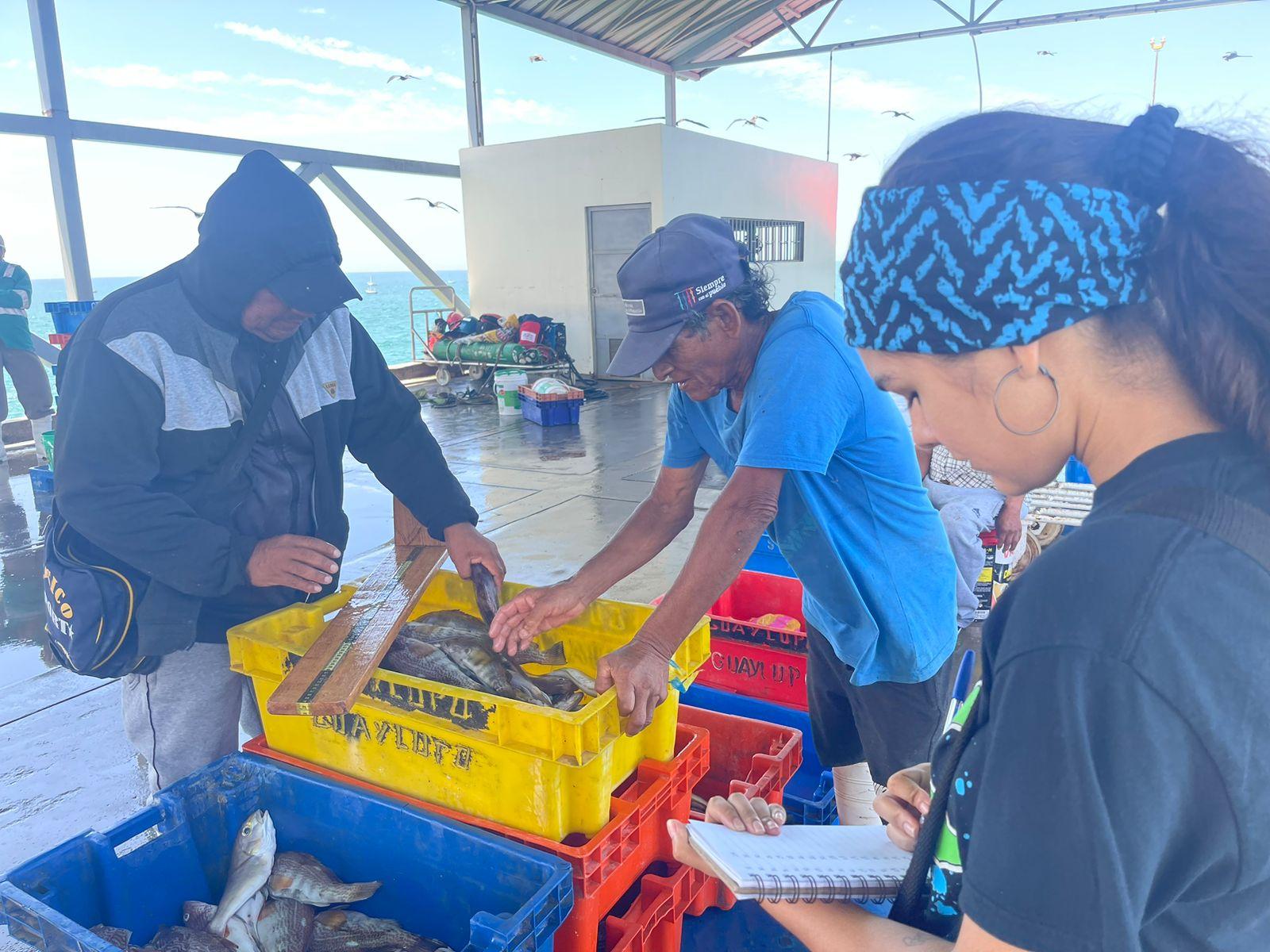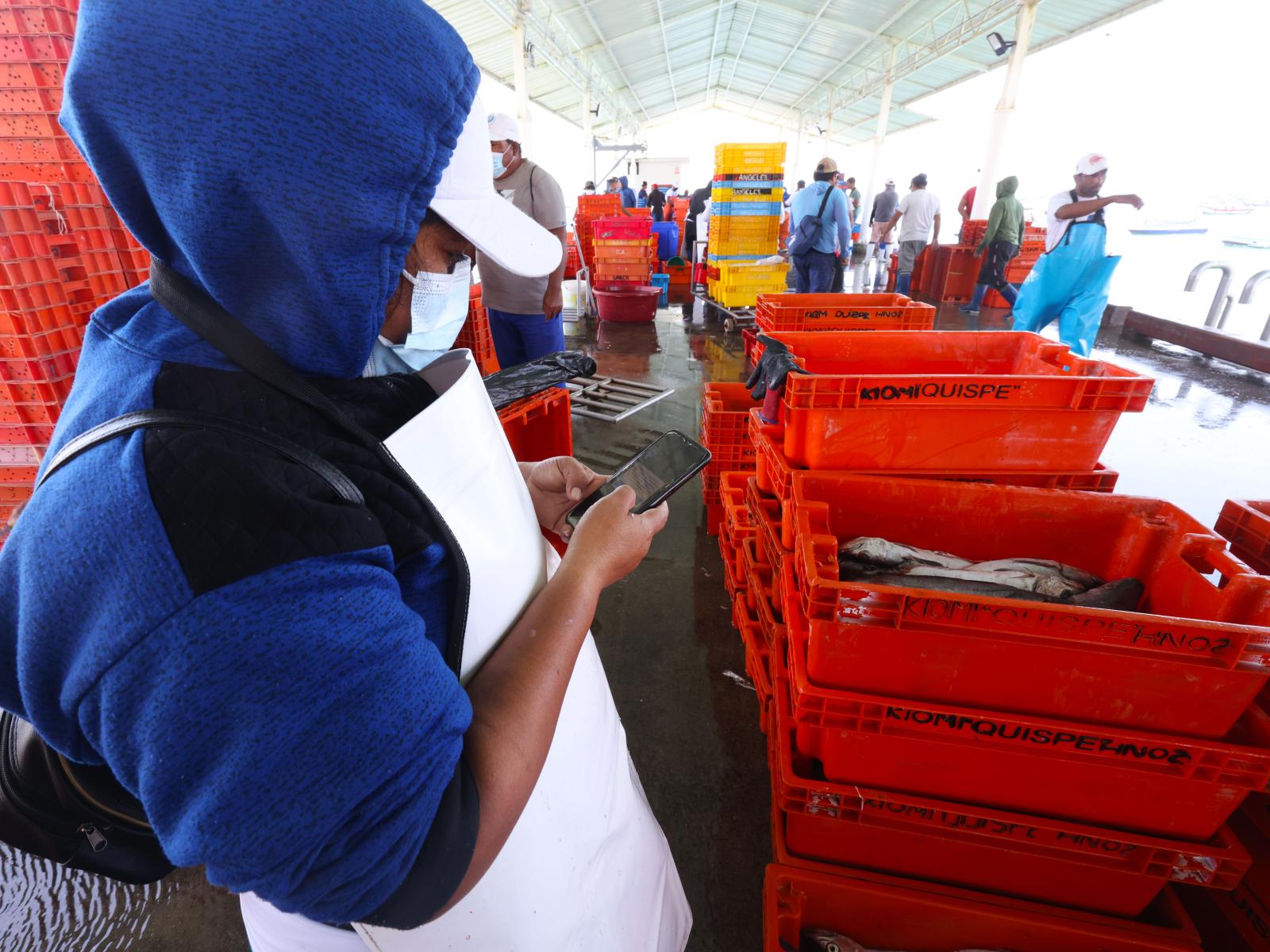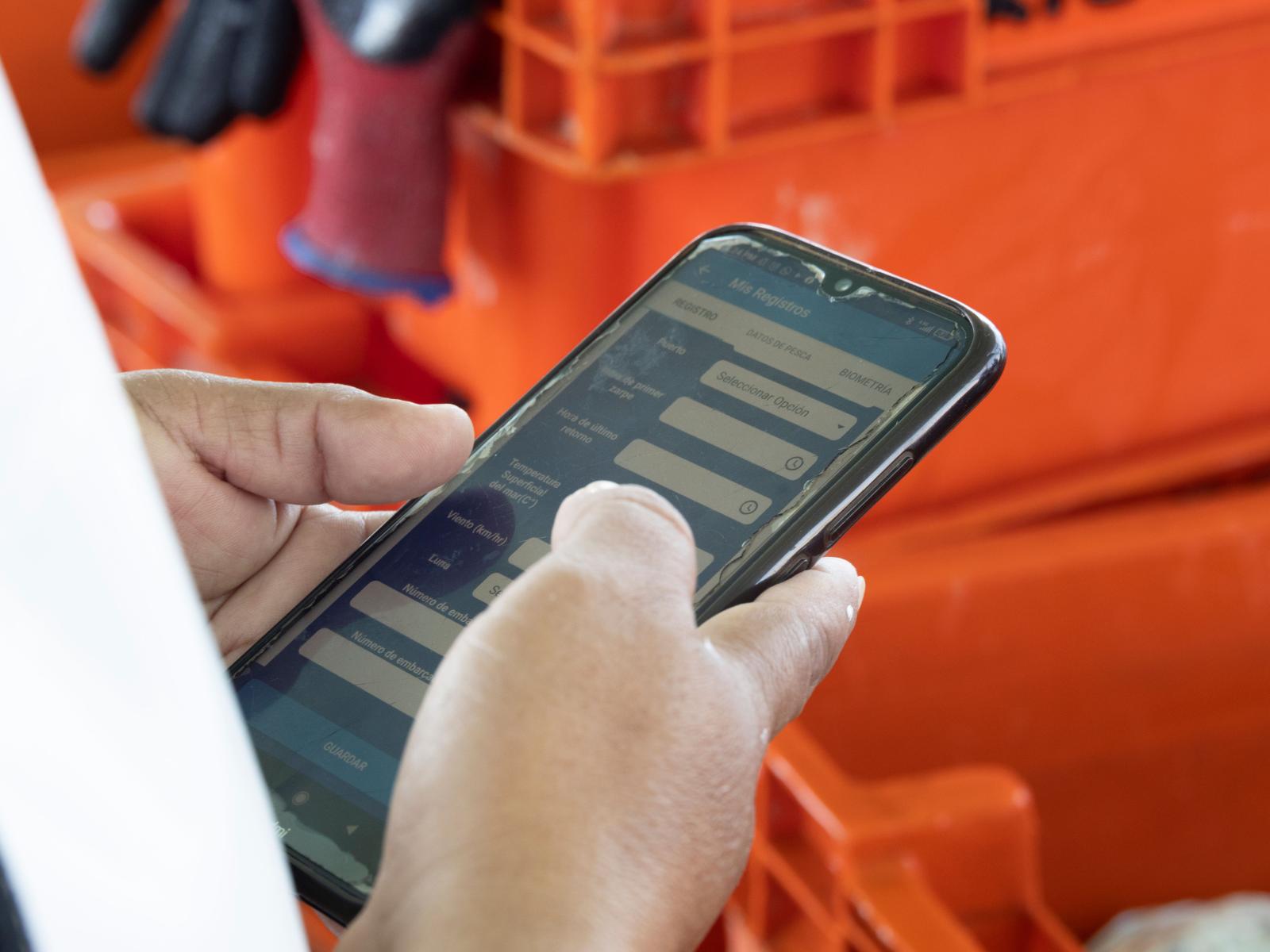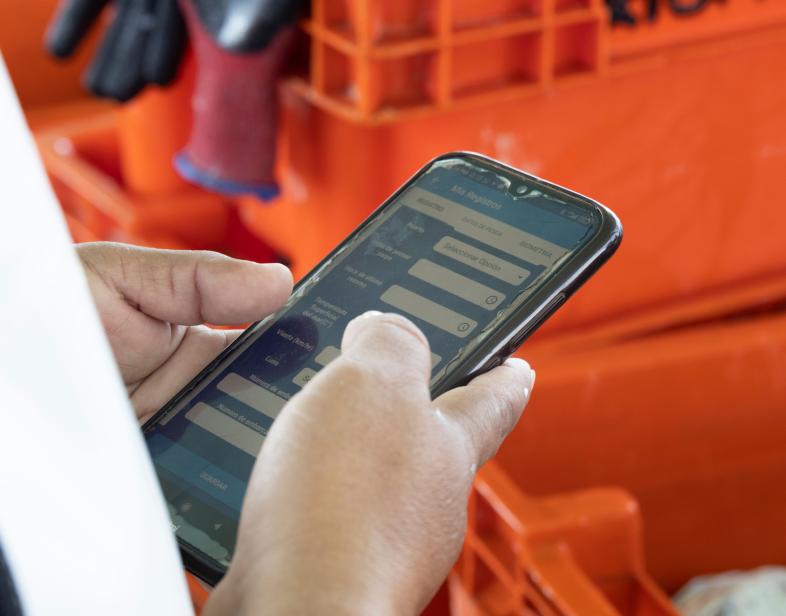An Overview Of Our Solution
In Peru, the Small Scale Fisheries are characterized by open access, lack of management fishery measures, not-enough fishing data collection along the coast, and the formal register of vessels and fishermen is underestimated. Several fisheries in northern Peru lack any management that secures their sustainability over time. Since 2022 Prodelphinus, EDF and communities stakeholders are collaborating to provide a platform where users (fishers community) of Northern Peru collect and analyze data of mainly artisanal fisheries that do not have regulation laws (grouper, Peruvian rock seabass, split tail Bass, and others) or have problems for formal access like Peruvian Hake; promoting co-management in coordination with government agencies to ensure the sustainability of the fishery. This proposal seeks to expand and include other fisheries in the area.
- Population Impacted: Directly—> 200 Indirectly—> 800
- Continent: South America
视频文件
姓
名
机构类型
电子邮件
背景分析
Fisheries represent 20% of the GDP of Peru and are one of the most relevant economic activities for the country. There are approximately 55,000 marine artisanal fishers, 16,000 artisanal vessels, and thousands more people who are dependent on fisheries directly or indirectly related to this activity. The SSF sector provides fish as food for millions of people living in coastal communities in Peru. Notably, around 33% of the artisanal fleet is aggregated in northern Peru, where the waters benefit from the productivity of the Humboldt Current and the biodiversity from the warmer equatorial current. The SSF in northern Peru are typically multispecies and use multiple fishing gears. One of the main fisheries for decades had been the Peruvian Hake, an iconic fishery in these ports (Image1). But these artisanal fisheries communities land more than twenty other species in this trophic web and contribute to communities' income. These fisheries also catch other non-target species and do not report this bycatch, and sometimes catch undersized specimens.
SSF in Peru are not well documented or regulated. The lack of precise historical data is the main concern from the perspective of improving fishery management. Most of the data consists of simplistic records of extrapolated biomass published by government entities regardless of the habitat from where fisheries resources were caught, how they were captured, and the lengths of capture.
Management of small-scale fisheries in Peru still operates within a top-down system. The lack of financing, together with insufficient data collection by the government, limits the development of regulatory measures, putting the sustainability of fisheries and fishers' livelihoods at risk. There are only 12 ROP (Fisheries law regulations) for more than 270 commercial species and the information that is registered is mostly of the industrial fishery, offshore.
Image 1. Red dots indicate location of targeted fishing communities in Piura, Peru.
描述您希望目标受众采用的技术解决方案。
Pro Delphinus (PD) developed a mobile application in 2018 called “Appescar” that aimed to provide a platform for fishers to report data about their fishing trips. There was no other app in Peru that collected such information for SSF. In 2020 PD created the “in-port observer” to help fishing communities to keep track of their landings and other information at the port level, this was implemented in five communities (Image 1).
In 2022, PD, Environmental Defense Fund (EDF) and SSF communities started to collaborate to strengthen this data collection for co-management focusing on the hake fishery and its trophic web, using information collected by Appescar. In this context, both organizations build a strategy with these communities to ensure sustainability based on co-manage. This process is still in progress to address unreported and unregulated fisheries and continue to empower these artisanal fishers to make better fishing decisions for sustainability with their own information.
描述你的行为干预。
Appescar was created to meet a necessity expressed by artisanal fishers to have timely information and to address the problem of the lack of data in many fisheries for better management.
However, fishers did not realize the power of having this information at their fingertips until they used it in 2021 for the permitting and licensing process in the hake fishery. After this process, they were increasingly motivated to collect information and request for implementation of data collecting in additional ports (specifically, Ñuro and Talara).
It is challenging to achieve changes in behavior or sustainable solutions when stakeholders don't see immediate results, so building trust through was key in this process.
Fortunately, this process started in 2019 with the promotion of a network of fishers called “Unión por la pesca Norteña'' and the subsequent introduction of Appescar by PD. This allows the exchange of knowledge and also promotes behavior changes in fishers based on camaraderie and the ability to tackle challenges together under this network approach. Each month the information is returned to the communities in easy-to-understand bulletins (Image 2), so they are able to see their information faster and have a first diagnostic of their fisheries. This allows them to build knowledge month by month and increase their capacity of response based on real information for fisheries management.
Image 2: Example of bulletin from El Ñuro, February 2023.
使用的行为杠杆
如需要,请更详细地解释你是如何使用杠杆的。
Information: Fishermen association lead the data collection. This project would provide them with tools to collect and interpret their own information and teach them how to apply this knowledge to their fisheries management and sustainability.
Material Incentives: Observers, who were selected by the fisher´s association and are part of the community, don't get paid a full salary, just a small price for their extra time and effort, and instead are doing the work to support their communities.
Rules and regulations: Traditional schemes of regulations are based on the top-down scheme, so rules frequently do not fit with ground reality. If so, fishermen decided to design a bottom-up scheme, reflecting their reality and using their real information.
视频文件
描述项目的实施。
Observers collect information daily every week, there are 2 or 3 observers in each port, and there are 4 ports. We trained them in Appescar, and teach them about information analysis. The data collection includes landings weight average by species and fishing gear for more than a hundred species, biometric sampling of hake and trophic web, prices of species landed, environment conditions of fishing, and others.
We ensured this solution is accepted and adopted by the community through the demonstration that this information can be useful for their personal needs like in obtaining their license and permit for the hake fishery for example. Furthermore, we are currently economically supporting observers for the monitoring activity while this behavioral change digs deeper.
A key success factor is that fishers started seeing benefits in monitoring, such as help with the formalization process, timely information on their resources, and the opportunity of building a management plan bottom-up scheme.
Also, transparency with the information is crucial. We deliver monthly bulletins with the complete analysis of information that they were collecting during the month, but they can access information anytime. We have had several meetings for validating the data and empowering them in using it for more accurate reality rules and regulations, some obstacles are the lack of trust of the fishermen communities in the government and their capacity to tackle the other problems that fisheries face such as illegal fishing. By empowering communities to do local management, strengthen their capacities, bring the tools, and facilitate spaces for dialogue with authorities, we hope to take the first step to trespass this obstacle. We hope eventually the fishers' association can be completely responsible for their monitoring.
描述项目的主导者。谁在主导项目实施?
Prodelphinus and Environmental Defense Fund are supporting, implementing and facilitating this process that is been leading by the fisher association leaders (representatives).
The team that is implementing the project on the field involves four early career scientists and associate researchers and conservationists from ProDelphinus and EDF. They are biologists and fisheries engineers who know the fishing communities, have been working with them for years, and have developed trusting relationships with them. Furthermore, we count on the support of the Fisheries Solutions center manager of EDF who has experience implementing this kind of solutions around the world in different countries like Chile, Cuba, Belize, Brasil and others.This implementing group will work with the support of advisors, mid-career researchers from EDF and ProDelphinus, which will act as supervisors and counselors for the project. These members have over 20 years of experience in conservation and fisheries.
分享参与解决方案开发和实施的关键合作伙伴。
Environmental Defense Fund (EDF) is well connected with the hake fishers in northern Peru EDF also facilitates a Learning Network for Small Scale Fisheries in Piura (Red de Aprendizaje para la pesca artesanal de Piura), which is an initiative that includes several stakeholder groups in addition to fishers and community members (e.g, government research and enforcement agencies), wherein they discuss problems and potential solutions for this sector. They have been working with northern communities for almost 6 years.
The Peruvian Sea Institute (IMARPE), is the institute in charge of generating information for the Ministry of Production (PRODUCE) to take fishery measures decisions and implement laws in the whole country. We have been keeping them informed on the advances of this project, also we invited them to several workshops we did in order to facilitate dialogue spaces with fishermen and bring the opportunity to exchange knowledge and perspectives. We plan to continue to do so in order to receive IMARPE support in implementing community management plans.
Additionally, since 2019 PD established a network of fishers (named Unión por la Pesca Norteña or UPN) in some ports in Northern Peru, overlapping with hake fishing areas. Nowadays the working group UPN includes 12 fisher members that report fishery data from their landing port through Appescar.
谁采用了期望的行为,采取的程度如何? 解释一下你如何测量行为变化的。
Four fisher communities of northern Peru have adopted the Appescar technology and are actively using it and sharing their knowledge with their peers. The monthly number of registers in Appescar has increased from 15 to 24 days a month, this shows the level of commitment and also the curve of knowledge is raising.
Actually, fishermen are using their information to discuss prices, and to know the landings volume, abundance, and frequency of length of mainly landed species.
The next steps include the participatory design of a strategy for developing a co-manage plan for Hake and its trophic web. Using the information collected, also we expect they will use the information to take future decisions in the management of other resources using a bottom-up scheme.
项目是如何影响水污染的?请详细说明并包括相关的测量方法。
Through this proposal, we plan to impact the environment by improving data collection, and insurance sustainable management plans for resources, also getting better reports and regulating fisheries, including bycatch information and lengths frequency of capture. More information means more resources to take assertive measures for biodiversity conservation.
您的解决方案如何促进平等(包括种族、性别、民族、社会阶层/收入,或其他)?
We have promoted women's involvement and participation in fisheries activity by including women as observers of this project. They have been participating in every discussion and meeting and we create safe spaces for them to also share their thoughts and points of views.
社会和/或社区是如何受益的?
Social benefits include fishermen able to monitor their own resources, which could help secure the sustainability of their fisheries which is their main livelihood. Co-benefits to these communities where the project is being implemented include the recognition of the identity as traditional hake fishermen communities, which for decades they had been claiming.
可持续发展如何得到促进?
These communities are highly dependent on fishing. In two of four ports, it was found that 83% of the fishermen is dedicated to hake´s fishery, and they haven´t other occupation. Close to 80% dedicate themselves to this activity all year round, becoming the main source of work and income. Thanks to the information there were collecting fishermen gets their license for catch Hake, so information could help the fisherman to get formal and be recognized, differentiating them from ilegal ones.
可持续性:描述你的解决方案的经济可持续性。
The proposed solution is very economical, since Appescar is a free application that can be downloaded by any interested part, it can be easily replicated. Furtheremore, has the interest of stakeholders. Also, “Unión por la Pesca Norteña”, promote the interest and usefulness of having information to improve fishing decisions; likewise, in 2022 PD and EDF were working with these four communities for development of fisheries Management Plans for hake and other associated species, so ideally is expected that latter, communities take lead on monitoring and continuing manages plan desing, just geting technical support from NGOs and be capable of discuss directly goverment.
投入产出:实施这些活动的成本是多少?与你上面的结果相比,你的结果如何 这投资吗?
Prodelphinus and EDF invested almost 37 thousand dollars to increase the data collection program, strengthen the registration of information, and motivate fishers’ participation. The current proposal seeks to improve the Appescar to facilitate the registration of information on more than a hundred fish species. The reporting of the artisanal fisheries of these ports will improve the tenure of their access rights (permitting and licensing) and the strengthening of co-management strategies for sustainability and maintenance of livelihoods. The investments of this proposal will have a high return on investment in economic, environmental, and social terms for these communities.
如何能将这个解决方案成功推广在其他地方?
Sharing information with other fishing communities nationally and internationally, through workshops to exchange experiences. In this sense, Learning Network for Small Scale Fisheries in Piura can be utilized, since it has collaborative ties with similar Networks in Mexico, Cuba, Chile, Asia-Pacific, among other places and where exchanges of multiple topics of interest to artisanal fishing are carried out, with the participation of the main fishing stakeholders (fishers, authorities, academia, NGOs, etc.)
Disseminating the information on Appescar, the user manual, and all the advantages of use to reduce the problems of non-reporting in artisanal fisheries. For this, communication resources can be designed according to the target audiences. Advocating, so that the results of the project can be incorporated into sectoral public policies and their implementation can be scaled up in other fishing communities both on the coast, highlands and/or Amazon.
与秘鲁野生动物贩运相关的主题
秘鲁地区适用
描述该技术解决方案如何解决秘鲁亚马逊地区的野生动物贩运问题。
No applicable
描述您的技术解决方案的可持续性和可扩展性
This model has the potential to be scalable to other fisheries in Piura and the rest of Peru, since it empowers fishers to have their own information and not depend on what the government is able to collect. Providing fast and timely information, this is a unique model to engage fishers in the participation of management in Peru.
如果适用,请解释解决方案的进度级别
Appescar was designed with a participatory approach so its design has some local concepts and includes traditional interests like for example the phase of the moon, the winds, and the landings per fishing gear. The implementation of Appescar in some fishers communities of northern Peru started in 2019. In 2022, the biometrics field and the fishing zone for the fisheries were added. Now the use of this information for management purposes remains a goal.
For this, we seek funding to continue to improve fields in the app and be able to apply a fisheries science and management tool, developed by EDF, called FISHE. This tool, which has free access, has a successful track record of helping to design in a participatory process successful co-management plans for data-poor fisheries. The information collected in Appescar will be used in FISHE and will help design a management plan for the artisanal hake fishers and its trophic web. This tool would also include all other species captured, including non-targeted and undersized. FISHE will use data collected and reported by community members using Appescar, so they can engage and participate in the management of their fisheries.
该解决方案的额外资金来源是什么?
37756 USD from Environmental Defense Fund
创新解决方案的成本
- Equipments - 4000 USD
- Travel and meetings- 6500 USD
- Materials and supplies- 4000 USD
- Personnel & Admin- 15000 USD




